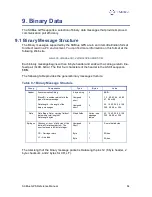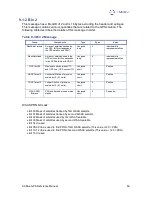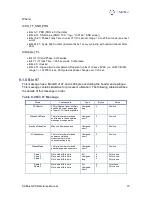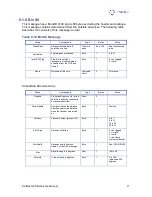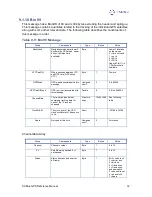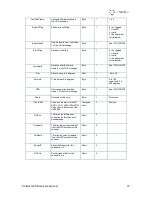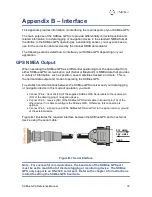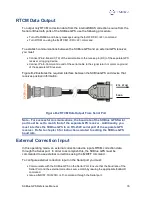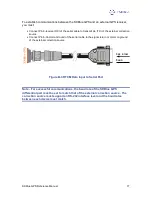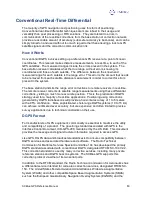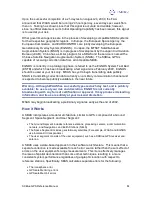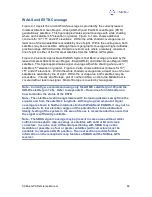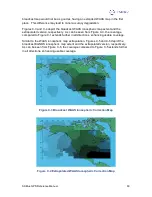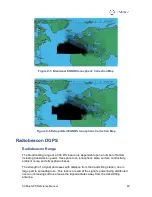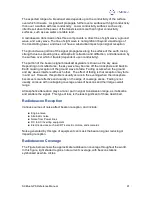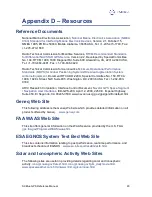
SXBlue GPS Reference Manual
78
Appendix C – Introduction to GPS,
SBAS and Beacon
This chapter provides a brief overview of GPS, differential GPS, Space Based
Augmentation Systems (SBAS) such as WAAS / EGNOS / MSAS / GAGAN and
radiobeacon.
GPS
The United States Department of Defense (DoD) operates a reliable, 24 hour a day, all
weather Global Positioning System (GPS).
Navstar, the original name given to this geographic positioning and navigation tool,
includes a constellation of 24 satellites (plus active spares) orbiting the Earth at an
altitude of approximately 22,000 km.
How it Works
These satellites transmit coded information to GPS users at UHF (1.575 GHz)
frequencies that allows user equipment to calculate a range to each satellite. GPS is
essentially a timing system - ranges are calculated by timing how long it takes for the
coded GPS signal to reach the user’s GPS antenna.
To calculate a geographic position, the GPS receiver uses a complex algorithm
incorporating satellite coordinates and ranges to each satellite. Reception of any four or
more of these signals allows a GPS receiver to compute 3D coordinates. Tracking of
only three satellites reduces the position fix to 2D coordinates (horizontal with fixed
vertical).
The GPS receiver calculates its position with respect to the phase center of the GPS
antenna. The latitude, longitude, and altitude of the antenna are referenced according to
the World Geodetic System 1984 ellipsoid (WGS-84).
GPS Services
The positioning accuracy offered by GPS varies depending upon the type of service and
equipment available. For security reasons, two GPS services exist: the Standard
Positioning Service (SPS) and the Precise Positioning Service (PPS). The SPS uses a
code modulated onto the signal for measurements and is referred to as the Coarse
Acquisition code (C/A code). The US Department of Defense (DoD) reserves the PPS
for use by its personnel and authorized partners. The PPS uses a different code than
the SPS, referred to as the Precise Code (P-code) and contains more resolution than the
C/A code. The DoD provides the SPS free of charge, worldwide, to all civilian users.
In order to maintain a strategic advantage, the US DoD used to artificially degrade the
performance of the SPS so that the positioning accuracy was limited to 100 meters 95%
of the time. This intentional degradation is called Selective Availability (SA). The effect

